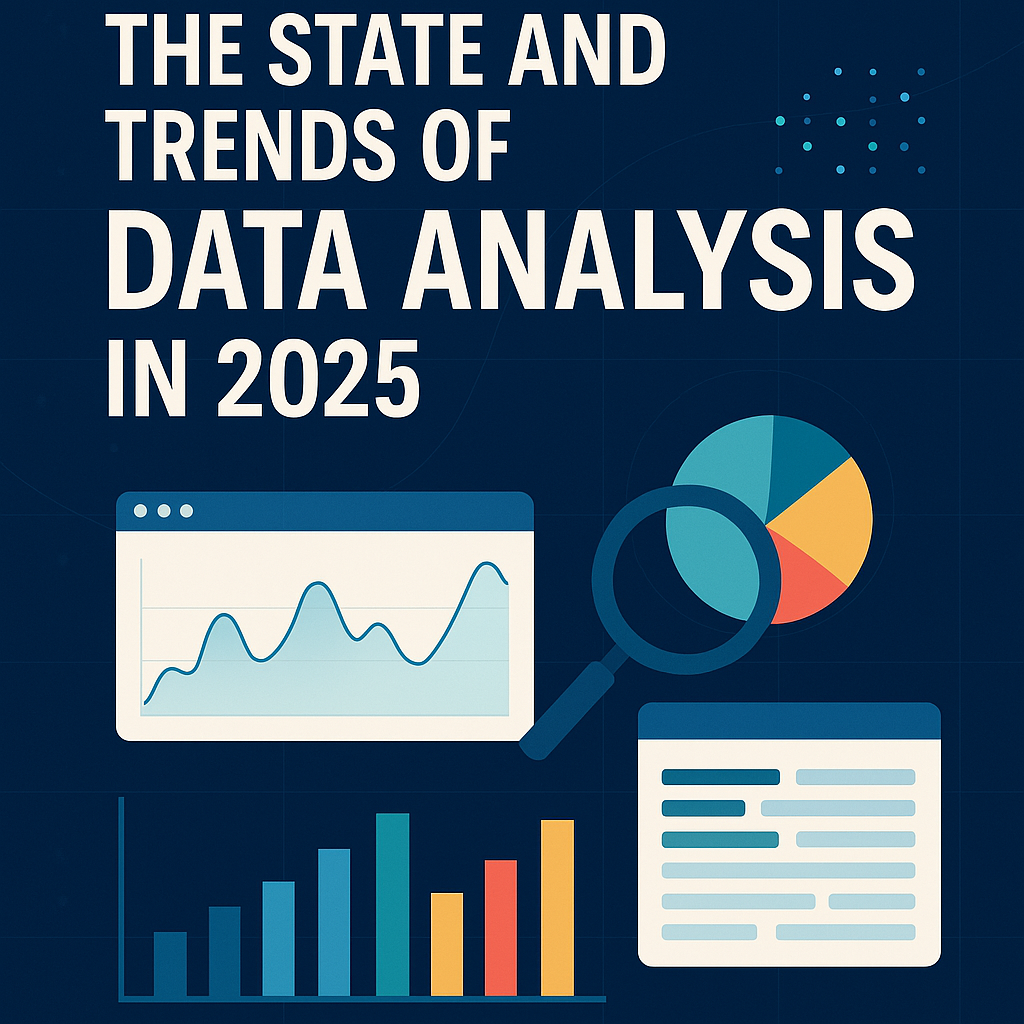In a world increasingly driven by data, the field of data analysis continues to evolve at a breathtaking pace. In 2025, data analysis is not just a support function—it’s a core strategic capability powering decision-making, innovation, and competitive advantage across industries. From the rise of generative AI to the integration of real-time analytics in everyday business operations, the landscape of data analysis has undergone a transformative shift. This article explores the current state of data analysis, key trends shaping its future, and the challenges and opportunities organizations face in adapting to this new era.
The Maturing Data Ecosystem
Over the last decade, organizations have moved from simply collecting data to actively using it to drive business insights. By 2025, the infrastructure supporting data analytics has matured considerably. Cloud platforms such as AWS, Microsoft Azure, and Google Cloud have democratized access to powerful analytics tools, reducing the barrier to entry for smaller firms and startups. At the same time, data engineering practices have improved, leading to cleaner, more accessible datasets.
Modern data stacks now often include tools for data ingestion (like Fivetran or Airbyte), transformation (dbt), storage (Snowflake, BigQuery), and analysis (Tableau, Power BI, Looker). Data warehouses have become more efficient, and the emergence of lakehouse architectures—combining the best of data lakes and warehouses—has enabled real-time, large-scale analytics.
Key Trends in Data Analysis
1. AI-Powered Analytics
Arguably the most significant trend in 2025 is the integration of artificial intelligence, particularly generative AI, into data analysis workflows. Tools like OpenAI’s Codex or ChatGPT, and similar AI copilots, are being embedded directly into BI platforms, helping analysts and even non-technical users query data using natural language.
These AI tools do more than generate SQL queries—they can generate dashboards, create predictive models, summarize insights, and even recommend business actions. For instance, a marketing manager can ask, “Why did sales dip last quarter?” and receive not only a chart but a narrative explanation with contributing factors identified.
2. Self-Service and Democratization
Self-service analytics is gaining ground, empowering business users across departments to access, explore, and analyze data without relying on data teams. With intuitive interfaces, drag-and-drop functionality, and natural language processing (NLP), even users without a technical background can find insights on their own.
This democratization shifts the role of data analysts from report builders to enablers and educators—designing data models, ensuring data quality, and guiding users in interpreting results correctly.
3. Real-Time and Streaming Analytics
The demand for instant insights has pushed organizations to adopt real-time analytics solutions. Streaming platforms like Apache Kafka and cloud-native tools like Azure Stream Analytics allow companies to analyze data as it flows in, rather than after the fact.
Industries like finance, retail, and manufacturing benefit immensely. Fraud detection systems, personalized online experiences, and dynamic pricing models rely on up-to-the-second data analysis. By 2025, real-time analytics is no longer a luxury—it’s a necessity in many sectors.
4. Data Governance and Ethics
As data analysis becomes more central to decision-making, concerns around data privacy, bias, and ethics have grown. In 2025, organizations are under pressure to demonstrate transparency in how data is collected, analyzed, and used.
Data governance frameworks are more robust, often including AI explainability, lineage tracking, and compliance checks baked into analytics platforms. Regulations such as GDPR, CCPA, and newer AI-specific laws are shaping how organizations handle and analyze data. Trust is now a key metric in the data space.
5. Predictive and Prescriptive Analytics
While descriptive analytics answers “what happened,” and diagnostic analytics explains “why it happened,” predictive and prescriptive analytics answer “what will happen” and “what should we do about it?”
Machine learning models are more accurate and accessible than ever. Tools like DataRobot and Amazon SageMaker allow analysts to train, validate, and deploy models with minimal coding. Businesses are using these tools to forecast sales, optimize supply chains, detect anomalies, and recommend actions, effectively closing the loop between insight and execution.
Challenges Facing Data Analysis
Despite the progress, several challenges persist:
- Data Quality: Garbage in, garbage out. Poor data quality remains a top barrier to reliable analysis. Data teams spend a significant amount of time cleaning and validating data.
- Talent Shortage: While tools are improving, there’s still a high demand for skilled data professionals. Data analysts today are expected to understand business strategy, statistics, programming, and data visualization—an increasingly rare combination.
- Tool Proliferation: The market is saturated with tools, often leading to fragmentation. Organizations struggle to integrate their data ecosystem, creating silos and inefficiencies.
- Bias and Misinterpretation: Even with advanced tools, data can be misinterpreted or skewed by cognitive bias, sampling errors, or poor model assumptions. Training users in data literacy is critical.
The Evolving Role of the Data Analyst
In 2025, the role of a data analyst is broader and more strategic. Analysts are increasingly acting as „data translators,“ connecting business needs with technical solutions. Their skillset includes data wrangling, storytelling with data, stakeholder communication, and a working understanding of AI/ML.
As low-code and no-code platforms grow, analysts are freed from routine tasks and can focus on higher-order analysis, hypothesis testing, and experimentation. Collaboration with other departments—marketing, finance, operations—is key, as cross-functional data initiatives become standard.
The Future Outlook
Looking ahead, the next frontier for data analysis includes:
- Augmented Analytics: AI that not only assists but proactively discovers patterns, anomalies, and correlations that humans might miss.
- Synthetic Data: As privacy concerns grow, synthetic data—artificially generated but statistically accurate—will play a bigger role in model training and testing.
- Data Mesh and Decentralized Analytics: Moving away from centralized data teams, the „data mesh“ approach embeds data ownership within domain teams, enhancing scalability and responsiveness.
- Edge Analytics: With IoT and mobile computing on the rise, edge analytics—processing data at the source rather than in a centralized data center—is gaining importance in areas like healthcare, automotive, and logistics.
Conclusion
Data analysis in 2025 stands at a dynamic intersection of technology, strategy, and human insight. The tools are more powerful, the data more abundant, and the expectations higher than ever before. Organizations that can harness this potential while maintaining ethical and responsible practices will be better positioned to thrive in a data-driven future. As the field continues to evolve, one thing is certain: data analysis is no longer just about answering questions—it’s about anticipating them and shaping the future.


